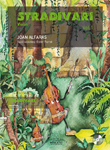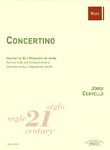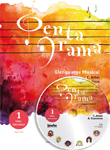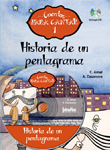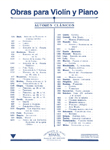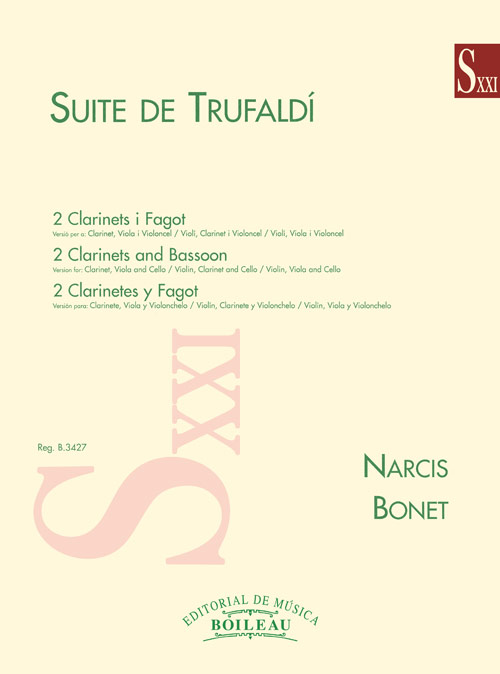WORKS
- Genre
-
Musical education
- Choir
- Counterpoint
- Dictation
- Direction
- Exam study manuals
- General music pedagogy
- Harmony
- Hearing
- Illustrations / Posters
- Improvisation / Sight reading
- Instrument methods
- Instrument pedagogy
- Instrumental study repertoire
- Instrumentation and orquestration
- Musical language
- Solfège
- Templates
- Theory and analysis
-
Incidental music
-
Lined paper
-
Flamenco
-
Religious music
-
Classical / contemporary
-
Modern music
-
Folk music / traditional
-
Musicology
-
Divulgation
-
Games and hobbies
-
Music therapy
-
Children / Youth
-
- Instruments
- Ensemble
- Difficulty level
- Period
- Genre
SOPORTE
Search
Find here: books, scores, composers, digital pieces, cd's
Best-selling works
Our classics

Newsletter
I wish to be informed of the news about your music
We have received your e-mail correctly
Multimedia
Suite de Trufaldí
2Cl/Fg o Cl/Vla/Vlo o Vl/Cl/Vlo o Vl/Vla/Vlo
BONET, NarcísBONET, NarcísBONET, NarcísReg.: B.3427
22,20 €
P.V.P. (VAT included 4%)
Add to cart
- Ensemble: Trios: ; ; Mixt.
- Genres: Classical / contemporary: Chamber.
- Language of the comment: Català/Français/Castellano
- Product format: Partitura + particellas
- Difficulty level: Intermediate-advanced
- Period: 2nd half S. XX - XXI
- Publishing house: Editorial Boileau
- Collection: Siglo XXI
- No. of pages: 24+96
- Measure: 31,00 x 23,00 cm
- Lenght: 15'
- ISMN: 979-0-3503-0403-3
- Available in digital: No
- Available for rent: No
The Suite de Trufaldí, originally written for two clarinets and bassoon, was composed in 1952 to serve as stage music for a single performance of Goldoni's play Arlequin, servant of two masters, in the Catalan version by Joan Oliver, performed at the Romea Theatre in Barcelona by the Agrupació Dramàtica de Barcelona.
The scene changes were made thanks to an ingenious set composed of three platforms on three triangular and rotating bases that moved characters dressed as harlequins, who evolved to the rhythm of the music that I had composed for each change of scenery. As this music was to be performed by musicians in full view of the audience, I chose the minimum of instruments with the maximum of sonic, expressive and dramatic possibilities. Inspired by Mozart's Divertimentos for two clarinets and bassoon, I chose these three instruments. Later I arranged the six different pieces in the form of a Suite, which has often been performed in its original version and also for string trio (violin, viola and cello) as well as for violin, clarinet and cello. That is why in this edition we present the original division with the instrumental parts corresponding to the three possible versions.
Narcís Bonet

